The term ‘Motion detectors’ can be used to refer to any kind of sensing system which is used to detect motions; motion of any object or motion of human beings. However, it is primarily used to detect motion of human beings or in other words, presence of a body in a certain area. 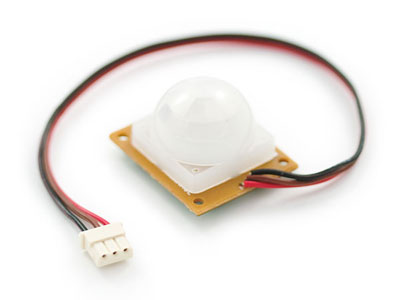

Fig. 1: A Representational Image of an Electronic Device, Motion Detector
A motion detector is an electronic device that detects the physical movement in a given area/ designated locations and it transforms motion into an electric signal.
Applications to detect motion do so by either:
• Generating some stimulus and sensing its reflection.
• Sensing some signals generated by an object.
All motion sensors indicate the same thing; that some condition has changed. All sensors have some ‘normal’ state. Some sensors only report when the ‘normal’ status is disturbed, others also report when the condition reverts to ‘normal’.
Motion sensors are commonly used in security systems as triggers for automatic lights or trips for remote alarms and similar applications. Motion sensors work based on a wide variety of principles and is used in a wide variety of applications. Typical usage could be in the exterior doorways or windows of a building for monitoring the area around the building. Upon detecting motion, they generate an electrical signal based on which some actions are taken. Some operate in much the same way as a military radar scanner, while others work based upon vibration, infrared radiation and even sound. All of these different types of motion sensors have different strengths and weaknesses, which are important to take into account when making a decision to choose a particle motion detection sensor.
TYPES OF MOTION SENSING
Motion sensors are employed to detect different types of human movement. Some are intended for local event sensing, some for area sensing
• Local Sensing
Local Sensing implies sensing of a motion at designated locations. Some of the motion sensors commonly used for this purpose are
o Visible/ Infrared light(LED/Laser) beam
o Contact Switch
o Piezoelectric Sensors
o Piezoresistive Sensors, etc.
• Area Sensing
Area Sensing implies sensing of a motion in a specific ‘Field of View (FOV)’. Motion sensors commonly employed for such application are
o Active/ Passive Infrared Motion Detector
o Ultrasound motion detection sensor
o Footstep Detection Sensing
o Microwave Doppler sensor
o Video
Local Motion Sensing
LOCAL MOTION SENSING
• Visible/ Infrared light(LED/Laser) beam based motion detectors
This kind of motion sensors employs break beam principle; in a light source transmits a beam of light towards a distant receiver creating an “electronic fence”. Once a beam is broken/ interrupted due to some opaque object, output of detector changes and associated electronic circuitry takes appropriate actions. Light source used can be visible light source or an Infrared light source. 

Fig. 2: A Diagram Demonstrating the Principle of Lnfrared Light Beam Based Motion Detectors
• Contact Switch based motion detectors
Such switches can be placed under the mat and can be simplest of make-break types. In normal state, the switch is open, but when a person walks over the mat, the switches get closed. The status of the switch helps in detection of the movement.
• Piezoelectric/ piezoresistive Sensors based motion detectors
In place of contact switches, piezoelectric/piezoresistive sensors can be used. Piezoelectric sensors use piezoelectric effect. These generate electrical output on application of pressure. Piezoresistive sensors change their resistance on application of pressure. The change in resistance is measured to calculate applied pressure, i.e., movement over the sensor.
AIR & PIR Motion Sensors
MOTION SENSING IN AN AREA
1. Active/ Passive Infrared Motion Detectors
Infrared is the portion of the electromagnetic spectrum that falls between microwaves and visible light. Infrared has wavelengths longer than visible light but shorter than microwaves. Humans, at normal body temperature, radiate most strongly in the infrared, at an approximate wavelength 10 µm. To detect this signal, a transducer is required that converts the infrared signal to electrical output.
Active infrared (IR) motion detectors operate in conjunction with a radiation source. They are able to sense disruptions in the radiation that they receive, usually caused by an intruder’s body heat. In order to sense an intruder, therefore, the intruder must pass through the field generated by the radiation source. However, they are not very common.
Whether it is to detect ‘someone moving in the front yard’, or ‘someone moving through a doorway’, Passive InfraRed (PIR) sensor is usually the sensor of choice. There is a simple electronic device which is sensitive to ‘heat’, or rather the infrared light that is emitted by warm or hot objects (like humans). Passive infrared (PIR) motion detectors also operate from the same general principle as active infrared motion detectors, but they do not require a radiation source. Instead, they are able to sense changes in the surrounding area’s ambient infrared radiation. PIR detectors are the most widely used type of motion sensor.
Passive infrared (PIR) sensors react to the infrared heat energy emitted by people. PIR sensors are passive devices in that they only detect radiation; they do not emit it. They are designed to be maximally sensitive to objects that emit heat energy at a wavelength of around 10 microns (the peak wavelength of the heat energy emitted by humans). PIR sensors are strictly line-of-sight devices. They cannot “see” around corners and a person will not be detected if there is an obstruction, such as a partition, between the person and the detector.
The ‘logic’ of the PIR sensor is that it must detect ‘significant change’ of the normal level of heat within the ‘field’ of its view. The circuits that control it must be able to determine what ‘normal’ is, and then close a switch when the normal field changes, as when a human walks in front of it. It must also be able to ‘tolerate’ slow changes within the field, and remember that as the new ‘normal’. Gradual changes like the sunlight changes throughout the day shouldn’t cause a false alarm.
PIR detectors sense sudden and slight changes in temperature within the area of detection; thus, when an intruder crosses or enters any zone, the resulting change in infrared energy is detected for alarm reporting. Best coverage is obtained if mounting is selected such that the likely direction of intruder motion is across the pattern.
PIR sensors employ a pyroelectric transducer to detect infrared radiation. The device converts the IR energy into a voltage signal. A pyroelectric sensor is made of ceramic material that generates a surface charge when exposed to infrared radiation. As the amount of radiation changes, so does the charge. The output voltage is a function of the amount of Infrared Radiation (IR) sensed at the input. As the sensor is sensitive to a wide range of radiation, a filter window is generally employed to limit the incoming radiation to optimize for human detection. Also to avoid detector to be sensitive to vibration, radio interference, sunlight and other background signals, two sensing elements in differential mode are used, causing any signal common to both elements to be canceled.
A multi-faceted Fresnel lens surrounds the transducer, pinching the light passing through it and focusing heat energy onto the detector. The Fresnel lens provides a cone of vision. This cone of vision has ‘dead’ zones (areas where the detector will not see motion), but these are dispersed throughout the field of view. Thus, the lens views the area with a multitude of narrow and discrete beams or cones. But, these dead zones do not create detection problems. It would be very difficult for an intruder to move around within the detectors field of view and not come in contact with active regions.
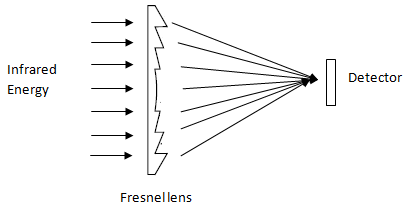
Fig. 3: A Diagram Showing Motion Sensing in Active Infrared Motion Detectors
These lenses may be sensitive in horizontal or vertical direction; most of them are horizontally sensitive. This implies that lens will be more sensitive to the movement of a body, horizontally across the field of view. Most PIRs are less likely to detect a body that is moving TOWARDS the sensor, hence PIR sensors should be positioned so that the most likely motion in their field of view will be horizontal to the ‘normal’ position of the sensor unit. This should be taken into consideration while installing these sensors.
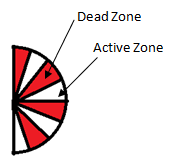
Fig. 4: A Diagram Illustrating Accurate Positioning of PIR
Also, care should be taken that PIR sensors aren’t pointed at surfaces that become ‘hot’ periodically.
Ultrasonic Motion Detection Sensors
2. Ultrasonic Motion Detection sensors
These sensor use two different principles:
a) Time-of-flight
This type of motion detectors uses an electrostatic transducer which acts as both a speaker and a microphone. The transducer transmits a burst of ultrasonic pulses. The ultrasonic pulses reflect off an object and return to the sensor. The sensor measures the time between the trigger rising edge and the echo rising edge. It uses this time and the speed of sound to calculate the distance to the object.
b) Doppler Based
In its simplest form the Doppler theory states that as sound, light or even radio waves are reflected back by a moving object, the frequency of these waves will be different from the frequency when the object is stationary. As the object moves away, the frequency will decrease and if the object moves toward you, the frequency will increase. This change in frequency is due to the waves being either stretched or compressed as they leave the moving object. Compressing the waves closer will have the effect of increasing the perceived frequency while stretching the waves will cause the frequency to appear lower.
Basic Sensor Operation Principle of these sensors is shown in fig. 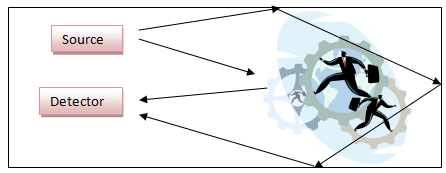

Fig. 5: A Figure Showing Basic Sensor Operation Principle of Doppler Based Sensors
The ultrasound transmitter emits ultrasound waves into sensor ambient space continuously. These waves reflect from various objects and are reaching ultrasound receiver. There is a constant interference figure if no moving objects are in the placement.
Ultrasonic motion detectors operate by tracking changes in sound frequency. Ultrasonic sensors activate a quartz crystal that emits ultrasonic waves throughout space. This signal creates a standing wave pattern in the room or area in which it is installed. 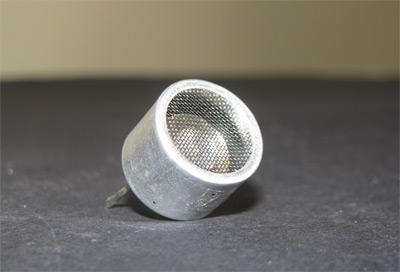

Fig. 6: A Representational Image of an Ultrasonic Motion Detectors
The unit then senses the frequency of the reflected waves. The standing wave is disturbed by movement so if there is motion, the reflected waves frequency will shift slightly (Doppler Effect). Any moving object changes the level and phase of the reflected signal, which modifies the summed received signal level. Some sensors perform reflected signal amplitude analysis while others perform reflected signal frequency analysis. Reflected signal spectrum emulates a Doppler effect.
Ultrasonic sensors operate at frequencies that are above human sensitivity (20 kHz). Typical operating frequencies are 25, 30, and 40 kHz. The ultrasonic sound waves cover the entire area in a continuous fashion — there are no blind spots or gaps in the coverage pattern. For this reason ultrasonic sensors are somewhat more sensitive to movement. For example, hand motion can be detected at a distance of about 25 feet, arm and body torso detected out to 30 feet and full body motion can be detected out to over 40 feet though these ranges differ significantly for different products.
Frequency components of the moving object speed vector have a component in the direction of ultrasound radiation propagation. Because ultrasound waves reflect from the windows, walls, furniture etc., the sensor can detect object movements in any direction. To implement this principle, the sensor must perform selection and processing of Doppler Effect frequency shift to detect moving objects.
Footstep Based Detection
3. Motion detection based on Footstep Detection
Walking people generate unique footstep acoustic and Doppler signatures that can be used for human detection and recognition to differentiate them from other moving objects. Footstep acoustic signatures have broadband frequency response from a few Hertz up to ultrasonic frequencies and generate vibrations and sound by an interaction of the foot and the supporting surface.
There are two characteristic frequency bands in the vibration and sound responses of footstep signatures. The first frequency band is generated by a force normal to the supporting surface and is concentrated in a low-frequency range below 500 Hz. The second frequency band is generated by the tangential (friction) force and located in a high frequency range, above 1 kHz up to ultrasonic frequencies. These frequencies can be measured and analyzed for the purpose of human detection.
Another method to detect human movement through footstep sensing is by measuring vibrations directly. Walking/running generates vibrations on the surface where movement is there. Accelerometers can be used to measure these accelerations. Analysis of these accelerations can be done to detect movement. Click to find out more about what is accelerometer.
Microwave Motion Detectors
4. Microwave Motion detectors
Microwave motion detectors use the philosophy of Continuous wave radar (CW) for motion detection. Similar to Doppler based ultrasonic motion detections, these detector use a transmitter to emit frequencies but in microwave range. The signals bounce off of the objects in the surrounding area. The detector is then able to track disturbances in these frequencies.
Microwave energy is developed by microwave oscillators and is radiated by antenna systems directionally or uniformly in all directions, based upon the application specific requirements. The radiated energy fills the surrounding area with microwave energy. Any movement in this area creates Doppler Effect; reflected waves will either be higher in frequency if the object is moving closer or lower if moving away. The detectors don’t care about the directions, frequency changes are the one they are concerned about.
These sensor systems may be monostatic, in which the emitter and receiver are contained in one unit or bistatic, in which the emitter and receiver are housed in separate units. Each type features advantages and disadvantages to the user. Monostatic units have limited range coverage compared to bistatic sensor. Bistatic sensors are also more prone to false alarms.
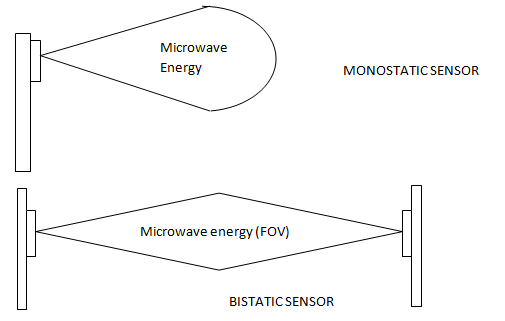
Fig. 7: A Figure Representing Range Coverage of Monostatic Sensor and Bistatic Sensor
The microwave beams can penetrate walls and hence allow detection of motion behind walls. As the sensors are extremely sensitive to motion, they are also prone to other false alarms. Objects blowing in wind may trigger alarms. Even fluorescent lighting, which emits detectable light particles, may trigger a false alarm. Though microwave beams can penetrate most types of surfaces, metal is not among them. Therefore, the sensor may detect motion where detection is not desirable and not detect motion where it is desirable.
These detectors are more sensitive than PIR detectors, and usually cost more.
Microwave-PIR Motion Detectors
5. Microwave-PIR Combo Motion detectors
To reduce the likelihood of false alarms, PIRs are increasingly combined with a microwave based Doppler detector to form Dual technology motion detector. Microwave based detectors are most sensitive to targets moving towards the detector, and less sensitive to targets moving slowly across its field of view, whereas PIR detectors are sensitive only to targets moving across its field of view. By combining the two systems, the detector can be made very difficult to avoid, less prone to false triggering events. These two types of sensors complement each other with one more sensitive in the area where the other is less sensitive.
Various Motion Detection Systems
VARIOUS MOTION DETECTION SYSTEMS
Various types of sensing systems, viz., infrared, microwave and ultrasound devices, are employed to detect movement of human beings or objects; each having its own pros and cons, sensitivity and range being the important parameters.
Since microwaves can pass through dielectric materials, microwave sensors are effective in large apartments/buildings. But these sensors are relatively expensive and their radiation is unhealthy for living organisms.
Infrared sensors are characterized by high sensitivity, low cost and are widely used. But, these sensors can generate false alarm signals if heating systems are active or temperature change speed exceeds some threshold level.
Ultrasound motion detection sensors are characterized by small power consumption, higher cost (compared to PIRs), and high sensitivity and provide greater coverage than PIR detectors. However, increased sensitivity means that ultrasonic sensors are more susceptible to false triggering due to any movement in the space.
Handling false alarms is a challenge for all these motion detectors. PIR detectors use two elements in differential mode to cancel undesired air motions, vibrations, etc. Also, filters are used to limit the IR radiation. Ultrasonic & microwave detectors adjust the receiver’s gain to lower the sensitivity to false echoes. To reduce sensitivity to doppler generated due to movable parts of air conditioners, etc., filters are used to limit the frequency range to false alarm-free operations. However, in spite of all these precautions, it is not possible to avoid false alarms completely. For improved false alarm free performance, dual technology detectors are the solution. Though single detection systems may detect motions which are not there, any motion doesn’t go unnoticed by these detectors. Hence, occasional false alarms are not of very serious concern and therefore, they are used with their limitations.
TYPICAL APPLICATIONS
Motion sensing is used in number of applications, viz.
• Automated lighting system
• Occupancy Sensors
• Vehicle Alert system
• Smart Floodlights
• Burglar Alarm
And many others.
Filed Under: Tech Articles


Questions related to this article?
👉Ask and discuss on Electro-Tech-Online.com and EDAboard.com forums.
Tell Us What You Think!!
You must be logged in to post a comment.